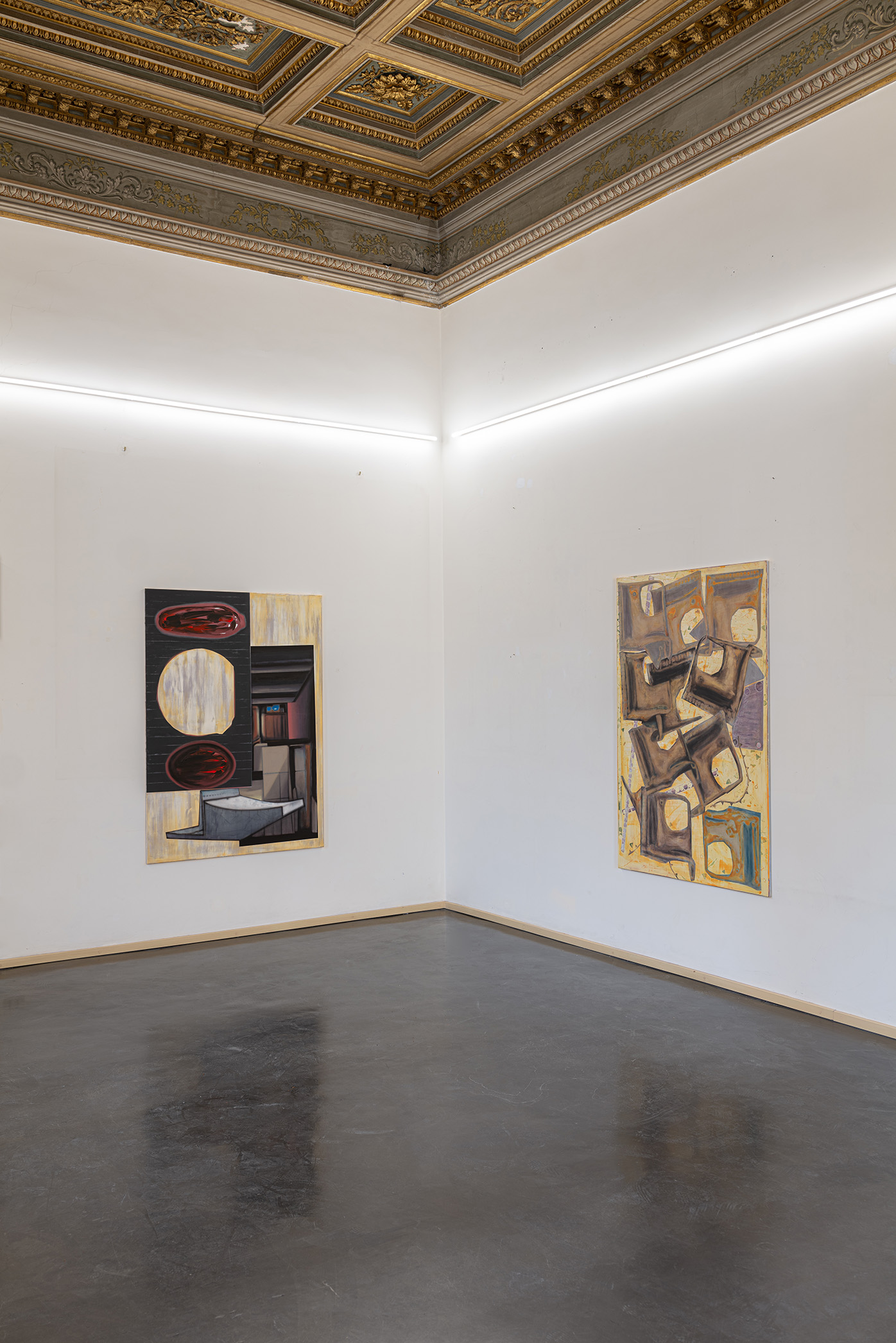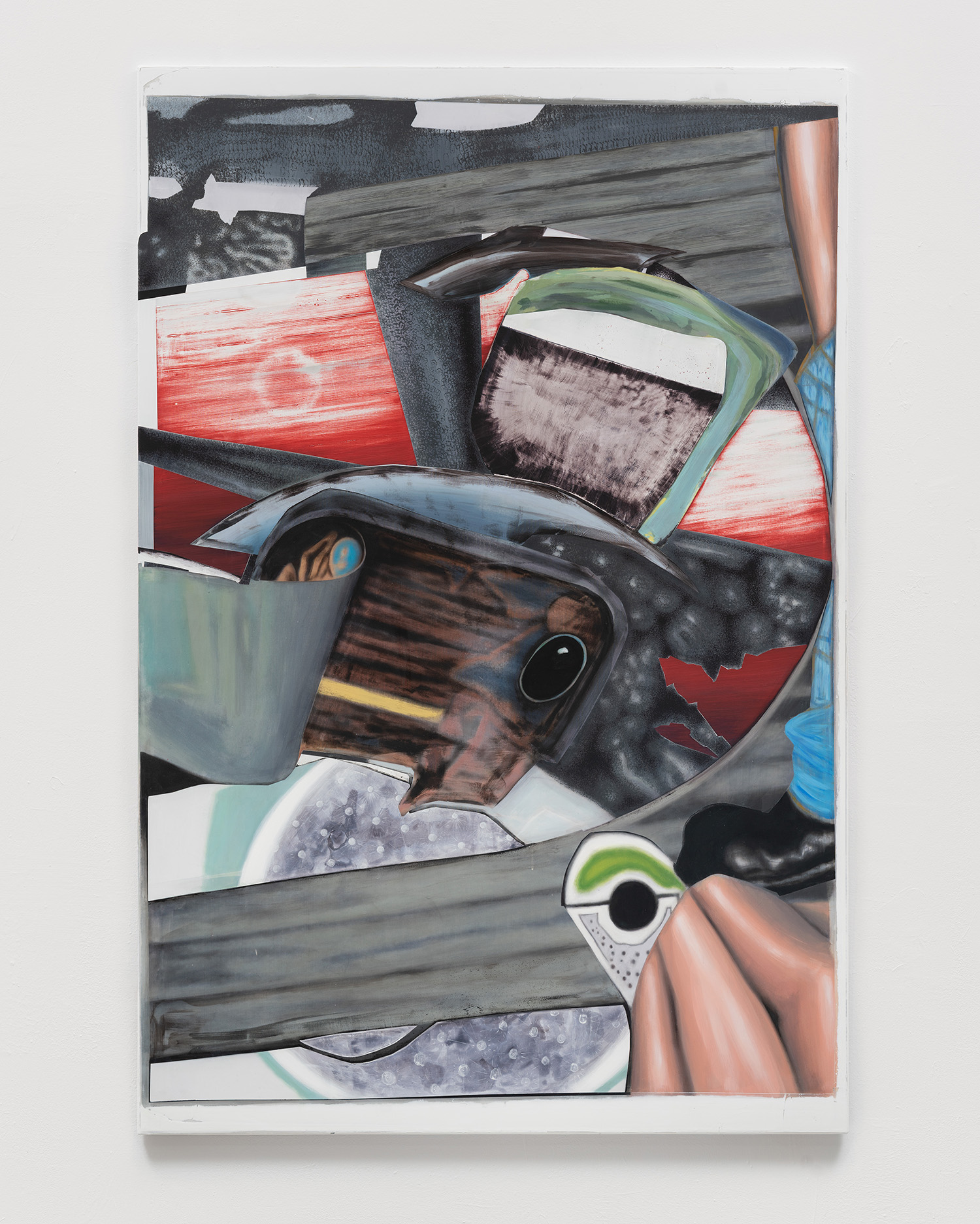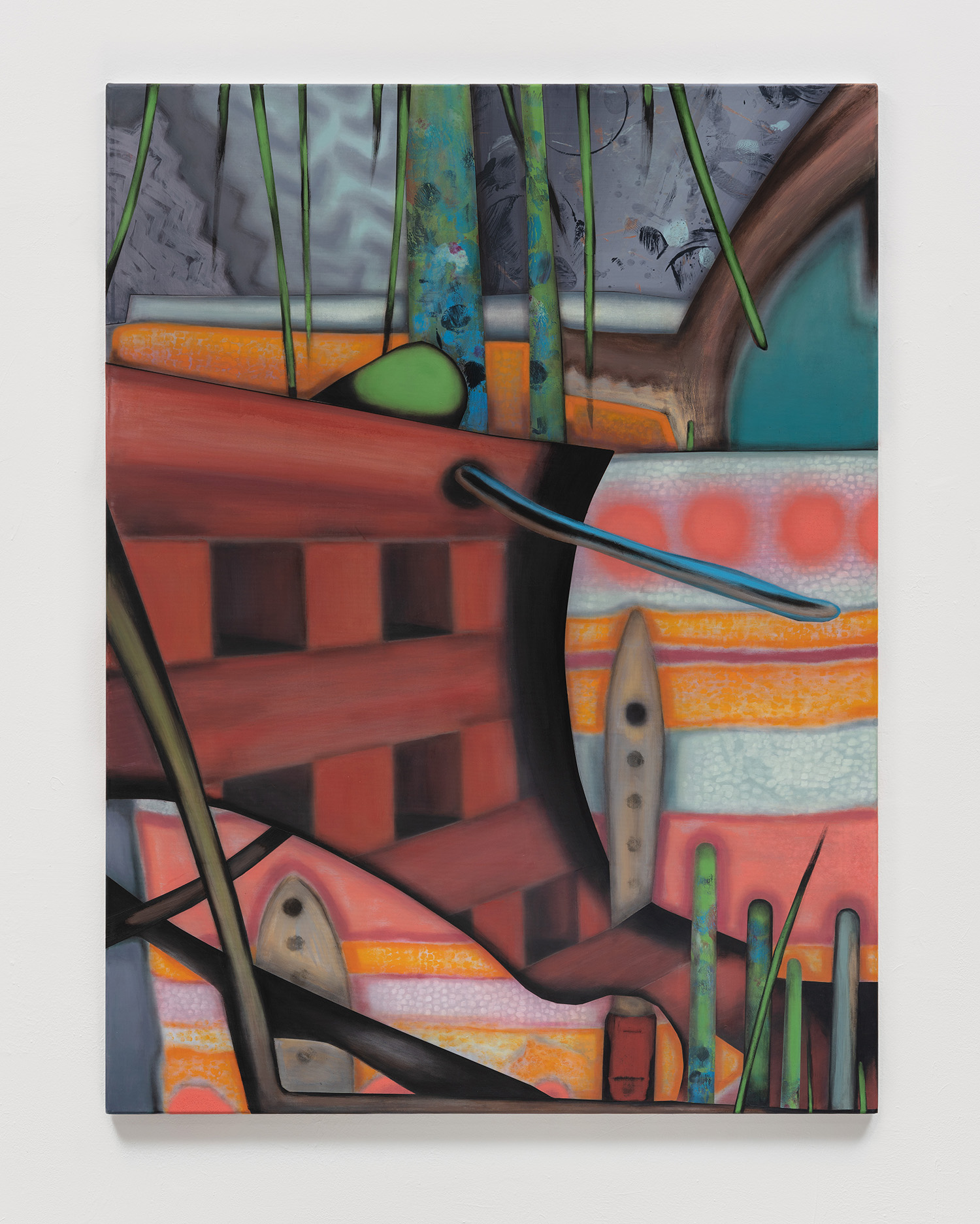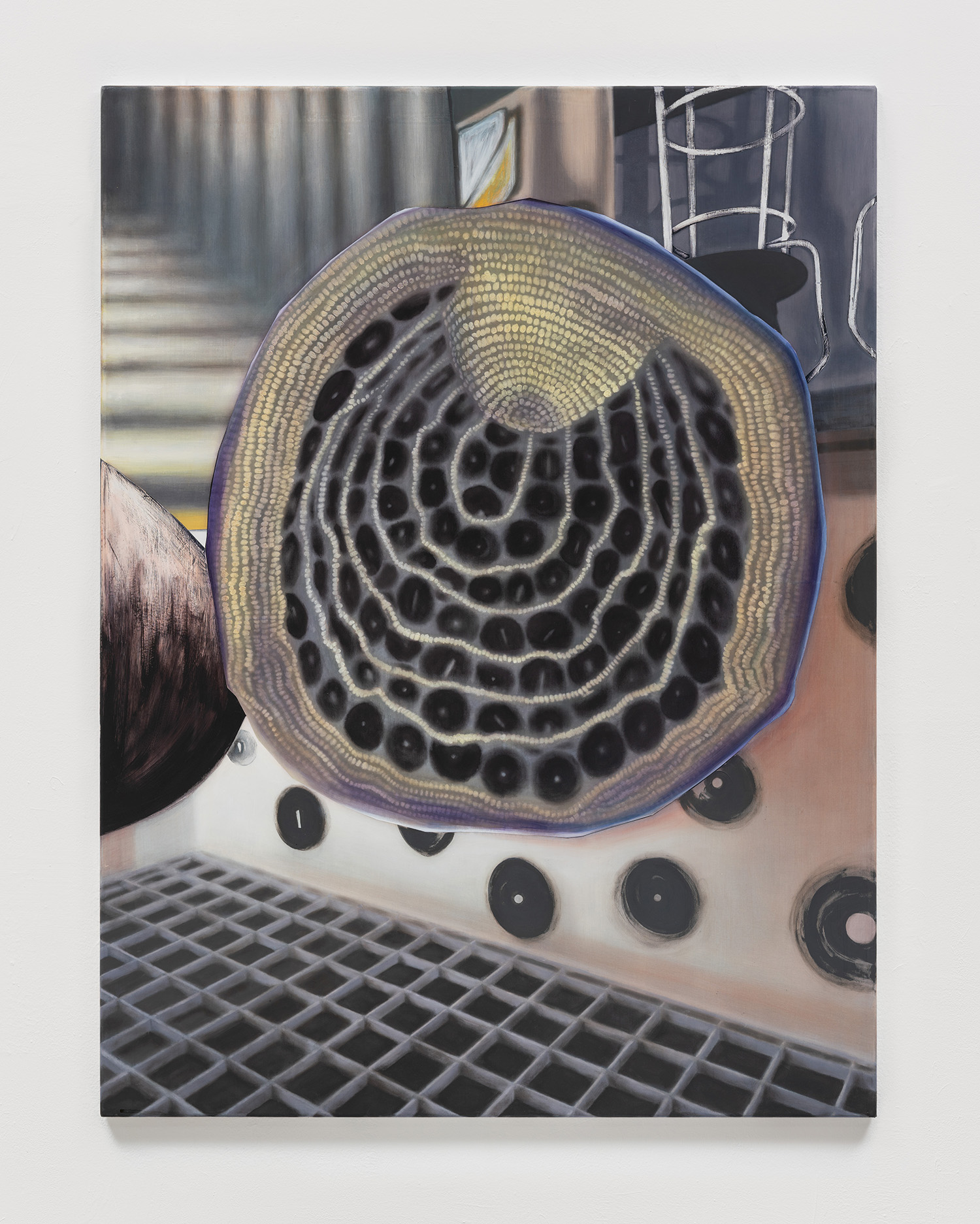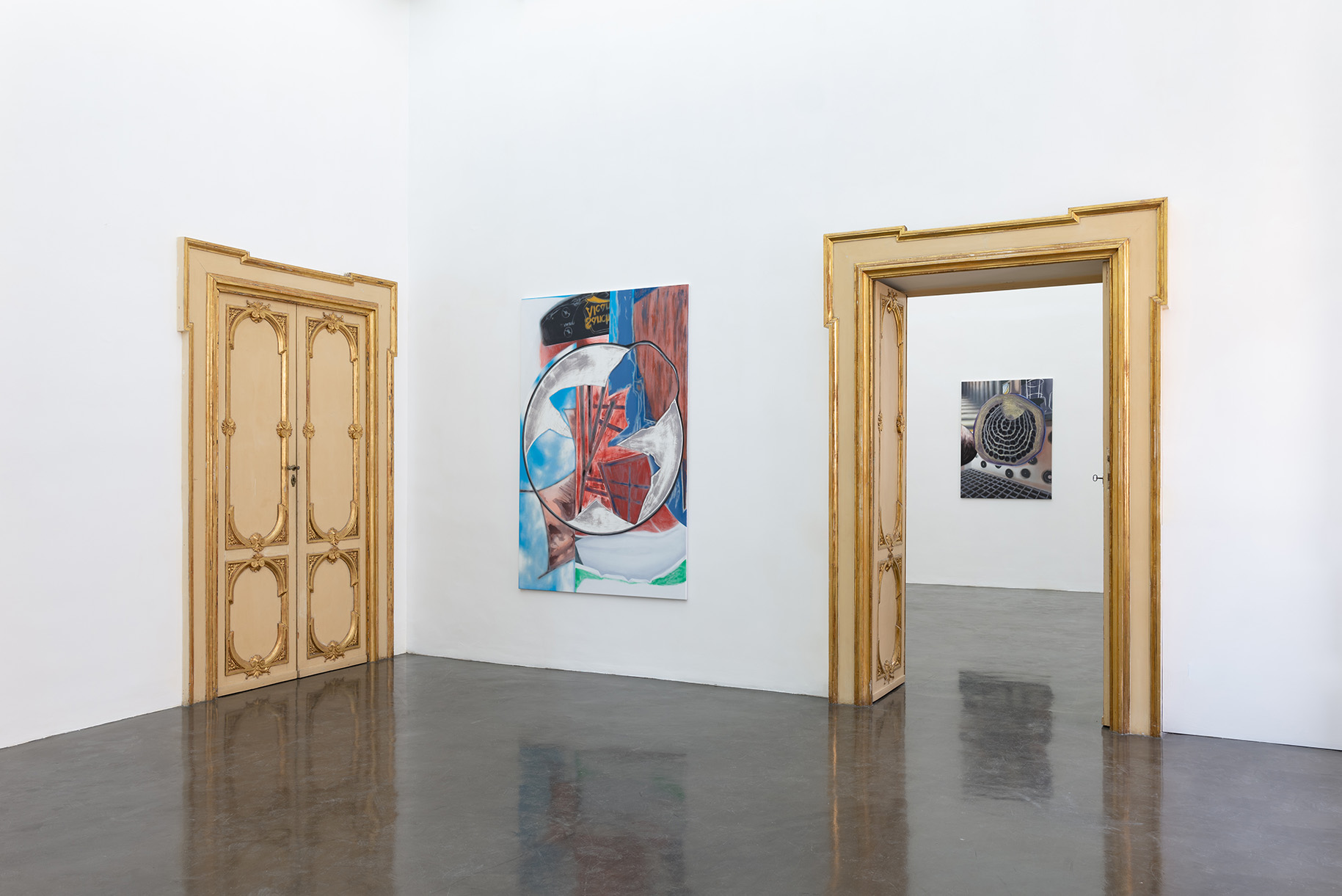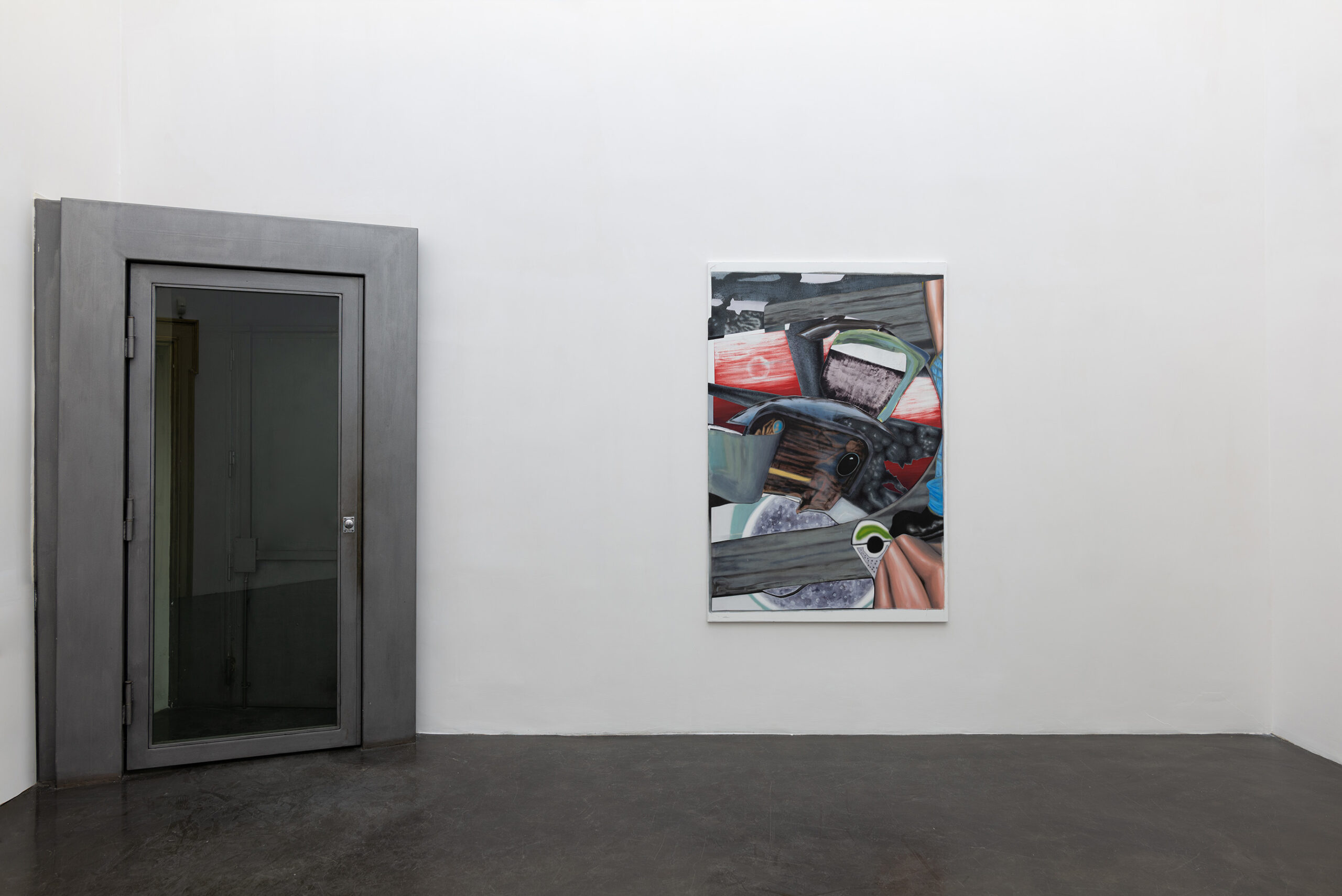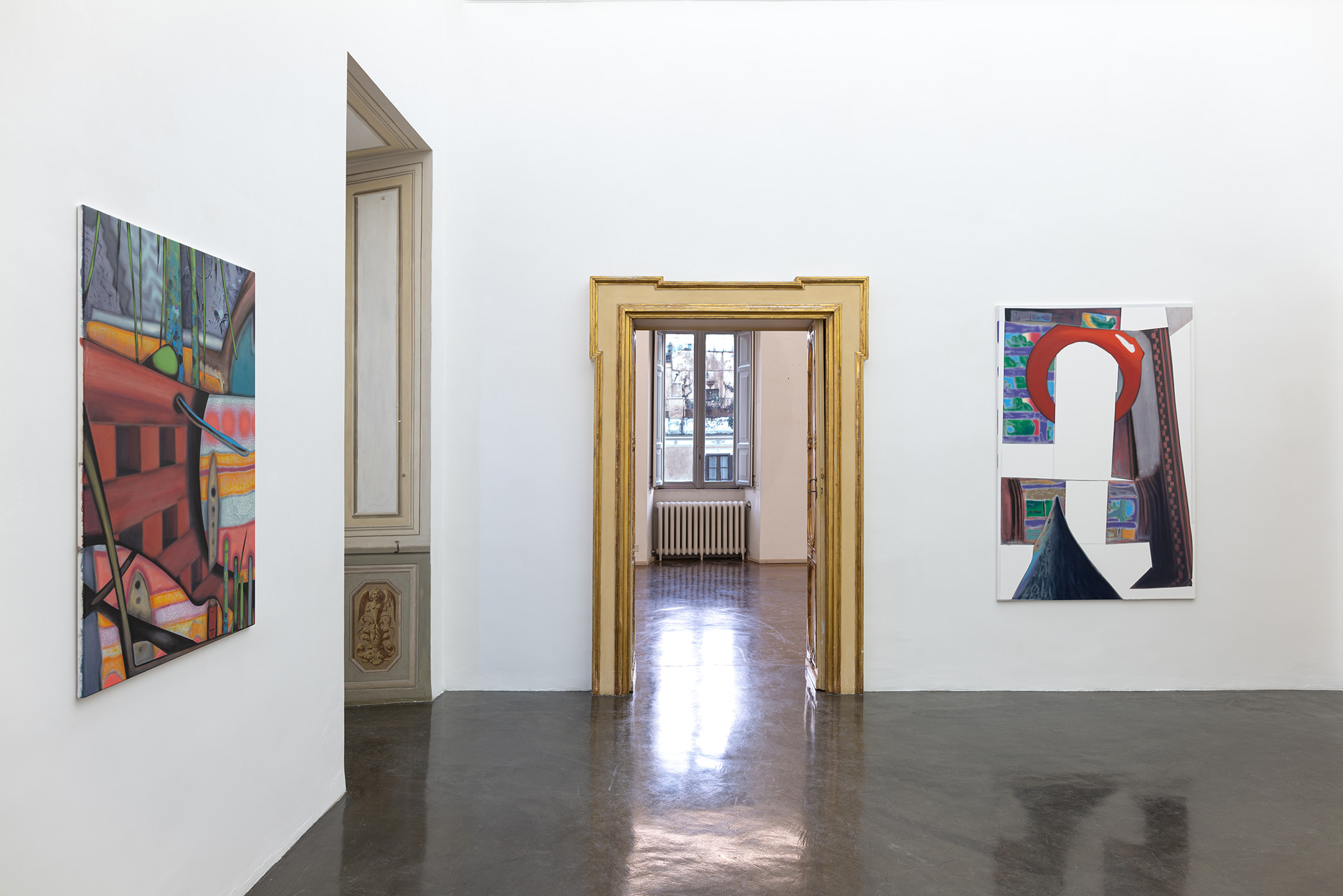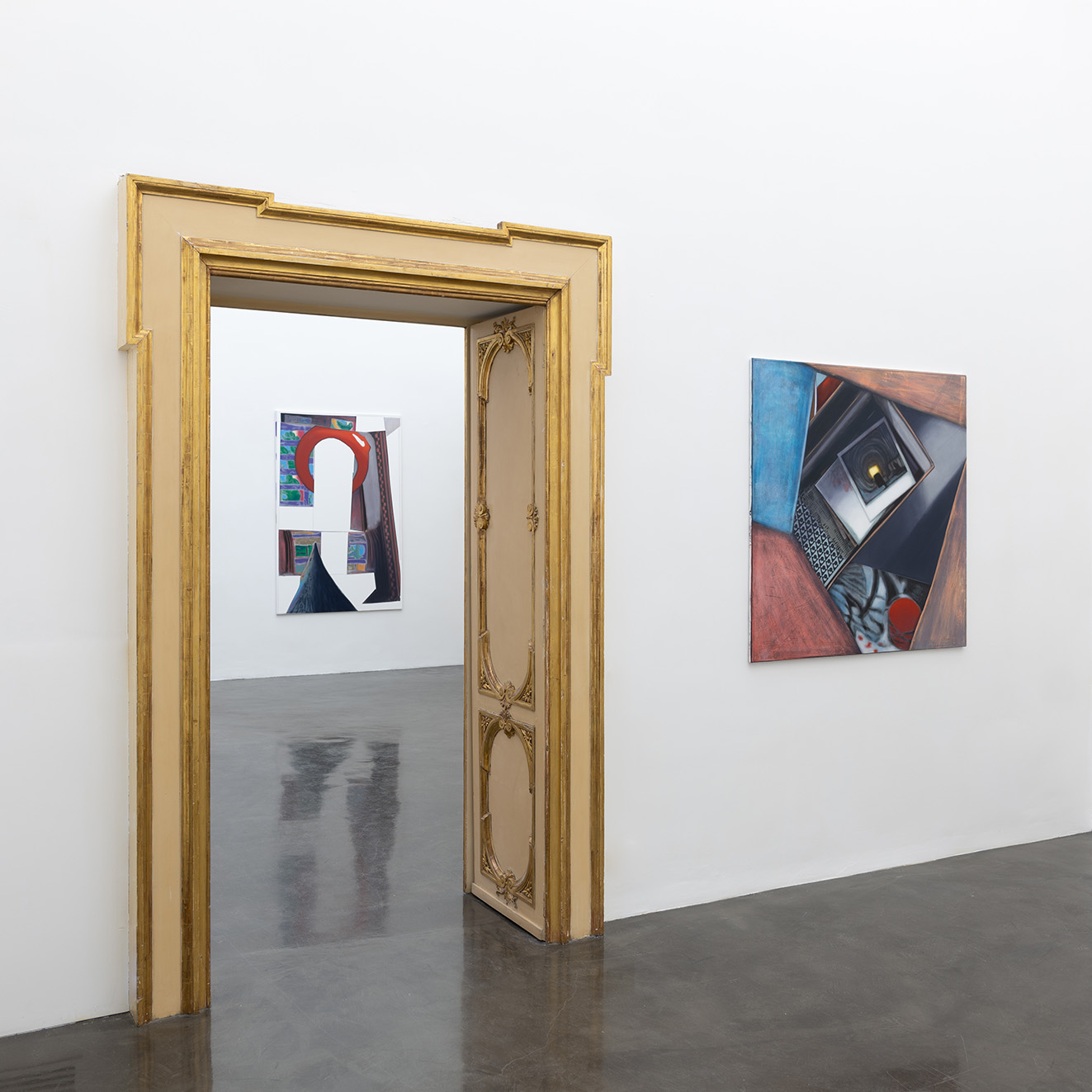Stratified I+II by Marlene A. Schenk
- Within the painting, coats are applied; removed, rubbed off, sanded, and paint scratched off again. It is transferred, transformed, printed, imprinted, and condensed. The coats are fat, having thickened three-dimensionally, while in parts of the picture the high density of paint makes them appear oily and heavy, like wounds gaping out of the canvas. In other parts, the paint seems translucent, light, and dry. At times, one feels that the paint drying upon the canvas is so thick, it turns into a material. Light unveiling those layered processes reveals this material metamorphosis. Maximilian Arnold’s painting can be understood as layering and sequential processes of transformation. Beyond paintbrushes, a hodgepodge of tools is used. He treats the canvas with rags, cutters, sandpaper, spatulas, sponges, and everyday objects used for transfer printing such as plates, paint tubes, lids, and plastic plates. The painter creates his own stencils; endless data to transform acrylic upon polyester fabric. One assumes a set of tools ultimately creates the picture. Yet, prior to that, there was already an image inherent to it. Books, daily newspapers, and magazines – cut up. Street flyers, restaurant menus, business cards, city maps. The internet is infinite, and so is the search; an archive is accumulated to destroy it, leading to the actual image. What is cut up, appropriated, and inserted becomes the act of collaging, becomes the act of painting, becomes composition, becomes the artist’s starting point, whose construction and image-making become an immanent part of his painterly production. In Arnold’s work, a collage is not a means to an end, it is a structural basis. Painting as a process without gestures: to Maximilian Arnold’s painting, gestures are of no interest, for each act is concrete and spontaneous ones only seldom used. Everything becomes part of the process of transformation – in its idiosyncrasy, even the brushstroke is deprived of the pathos of painting, as it becomes visible only by sanding the canvas, by scratching off paint. It becomes passive and bothersome, blocking the paint’s way. Arnold cuts the paint with his knife, just like he cuts the collage. The knife turns into a brush, a brushstroke into a picture – into an image of a brushstroke.
- Arnold’s art becomes ontological and thus links the objects of the world and soul, connections which one tries to read. In its cut-up state and now upon the canvas, the picture is constantly transforming. Only in the moment in which the picture is finalised, it enters a materialised state, while simultaneously being on the verge of dissolution. It is precisely that tension when gazing at it, that renders Maximilian Arnold’s art completely overwhelming. While looking from left to right, the painting’s clear, formal language corrodes into a transcendental lightness. Deciphering becomes disorienting, and within recognition lies the ambiguity and impossibility of reading. The wandering eye sees changing proportions in an otherwise familiar memory, vanishing points disappear within the interplay of light and shadow, and a white veil shines iconically above carmine red. In its density, this crowded something of pictorial information, which is crammed into its frame intends for the eye to stagger around; that calculation reveals itself amidst struggling with the picture. In the safety of reading, it destabilises repeatedly, it trembles and reads again. The picture comes into being. In contemplation, it comes into being again and again. Maximilian Arnold’s painting thus emerges as an archive of coming into being, of happenings. It opens up the present, rendering it receptive to the unexpected and new. It seems as if what cannot be seen was painted out of the picture. Again and again, even the painter explores the canvas anew, enabling one to experience it constantly in its entirety, as a whole picture. It is successively changed by an intuitive painting process, it is squeezed onto the canvas, and made to fit; the struggle is evident. The question of where painting begins, and the image ends remains unclear in Arnold’s work. Therein, painting becomes a method with which he bundles into a cosmos what’s visible and fleeting; it becomes a method of archiving the ephemeral real.

